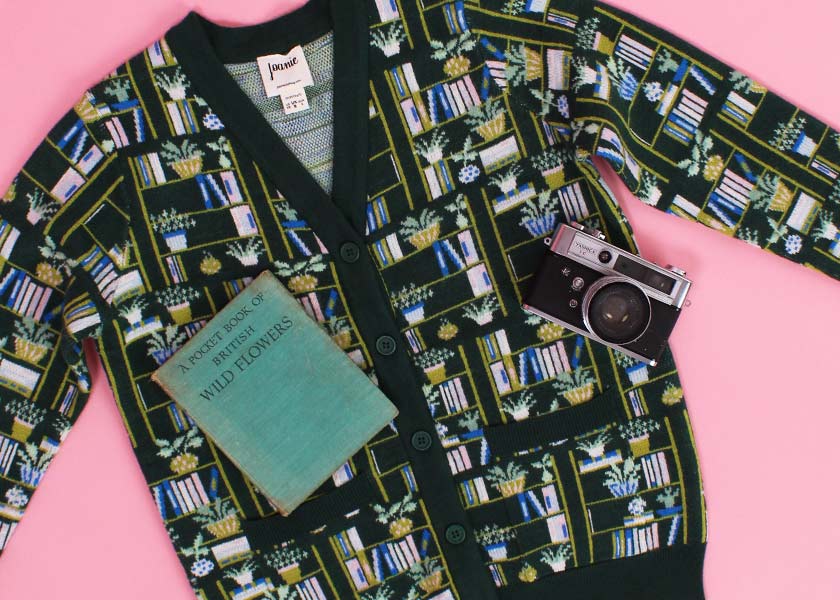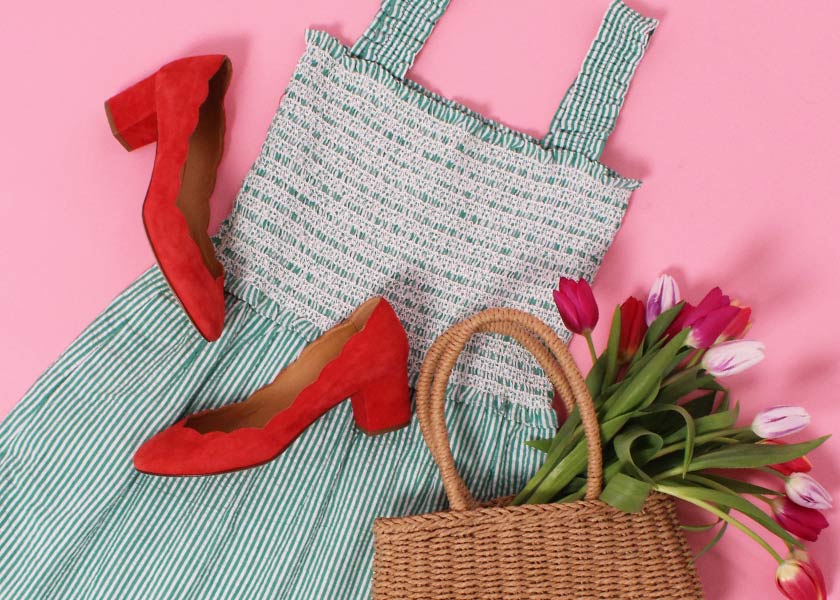Keeping your favourite clothes looking great forever sounds like a dream, but it can be a reality! We’re here to provide a rundown of some of our tips for helping the clothes that you love last as long as possible.
Over 1.2 million tonnes of clothing and textile waste ends up in landfill each year in the UK alone! We want to do as much as we can to limit the number of garments we throw away by making sure that the clothes we love stay nice and wearable for as long as possible.
It’s important to remember that even some brand new clothes do end up being sent straight to landfill sites, often due to them having been returned to large companies who haven’t yet implemented the framework to process returns properly. Here at Joanie, we never send brand new items to landfill and donate all of our samples to charity shops or local craft groups to be repurposed and given a new life.
Thinking about whether you will wear an item of clothing at least 30 times before you buy it is a tip that’s gaining popularity in recent years, and for good reason: according to a 2015 study of 2000 women in the UK by Barnardos, an average item of clothing is only worn seven times before it’s thrown away!
Good garment care goes hand in hand with shopping more sustainably, so we’re here with 5 of our top tips for keeping the clothes you love looking new - saving money, saving the environment, and saving your favourite items from ending up in landfill!
Joanie’s Top Tips to Make Your Clothes Last Longer
Over a quarter of a garment’s environmental impact happens after it’s been purchased, so by changing the way you care for your clothes, you can not only help them look good for longer, but you can also save water, energy, and money - good for you and good for the planet!
1. Wash it less and keep it cool
Hear us out on this one: as a general rule, it’s best to wash your clothes as little as possible. Washing breaks down the fibres in your garments and uses gallons of precious water, and items like knitwear and heavily dyed denim deteriorate more quickly when they’re washed frequently!
The temperature you see on the wash care label inside an item of clothing is actually the maximum temperature you should wash it at, not the recommended one. Washing your clothes at a lower temperature and on a gentle cycle helps limit the number of microfibres released by your items, reduces the amount of energy used by the machine, and helps keep your clothes smelling fresh with less risk of damage and shrinkage!
2. Air it out
Resisting the urge to throw everything into the tumble dryer can be tough, but air drying your clothing is another way to limit the risk of shrinkage while also helping the environment!
Clothes last longer when they’re dried on the line because the tumble dryer breaks down the fibres in your clothing, and the heat can cause shrinkage and twisting. Make the most of the next sunny day and hang your clothes outside, or on a maiden in a well-ventilated room if you don’t have much outside space!
When putting away your clothes after hanging them out, it’s important to remember to always fold knitwear to keep its shape, and if you’re looking to keep moths away, pack your knitwear away with a small bag of lavender, bay leaves, cloves, rosemary, or thyme - the odour repels them, so say goodbye to moth-eaten jumpers!
3. Get steamy
It’s usually a better idea to steam your clothes rather than iron them, but if you do have something that really does need an iron (think men’s shirts or creased linen), use a little bit of water to help the creases steam out and protect the item from being burned!
The humidity of the steamer helps to straighten the fibres in your clothes and is much gentler than the heat of a traditional iron. Handheld steamers are convenient and easy to use and often use less energy than an iron would because it makes the job itself quicker! If you don’t have a steamer, hang items up in the bathroom while you’re in the shower, or give them a quick blast with a hot hair dryer and watch the creases fall out!
4. Dye job
If you’re dealing with items of clothing that fade or discolour really quickly, then consider re-dying them when they start to lose their lustre. One way to protect the colour of heavily dyed or dark clothing like denim is to wash the item inside out, but if you find that your favourite pair of black jeans have turned a sickly shade of grey, it might be time to dye them!
Denim is a great example of a fabric that can be easily dyed, and eco-friendly dyes are becoming more widely accessible all the time. The same goes for brightening whites - rather than traditional bleaching, choosing a non-chlorine alternative can really help with the longevity of the fabric and reduce your impact on the environment!
5. Invest in your swimwear
Finding swimwear you love that fits and flatters well can sometimes feel like an impossible task, especially for an item of clothing that you probably don't wear all the time. That's why we recommend investing in one or two high-quality swimsuits or bikinis and really taking care of them - our new swimwear line is designed with this in mind, and every single piece is dual-sized to give you some leeway with the fit if your shape changes over the years!
Chlorine in swimming pools and the sun creams you might wear on holiday can take a toll on swimwear fabrics, so after you’re done swimming, make sure you rinse the garment thoroughly with cold water and leave it to dry fully before wearing it again. It's also really important to remove padded cups and wash them separately to the garment to maintain the shape of the piece.
6. Quality over quantity
We know it’s not realistic to commit to never shopping again, and while the best way to reduce the environmental impact of your wardrobe is to take good care of the items that are already in there, sometimes we do all have to buy some new pieces! If you’re looking to start shopping more sustainably, consider spending your money on wardrobe staples that you’ll wear year after year.
Wardrobe staples don’t have to be basic, though! Investing your money in pieces that you love and will want to have in your wardrobe for years to come will give you even more incentive to take care of them, helping less clothing end up in landfill and keeping you looking your best for years to come!










